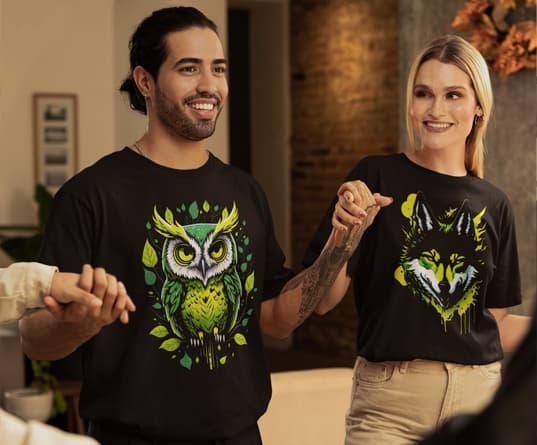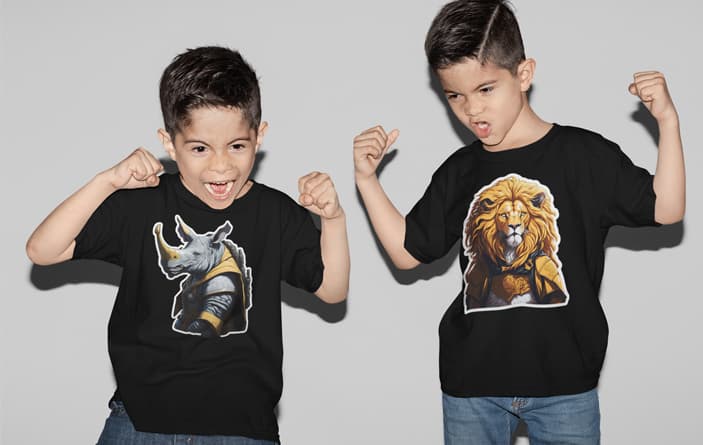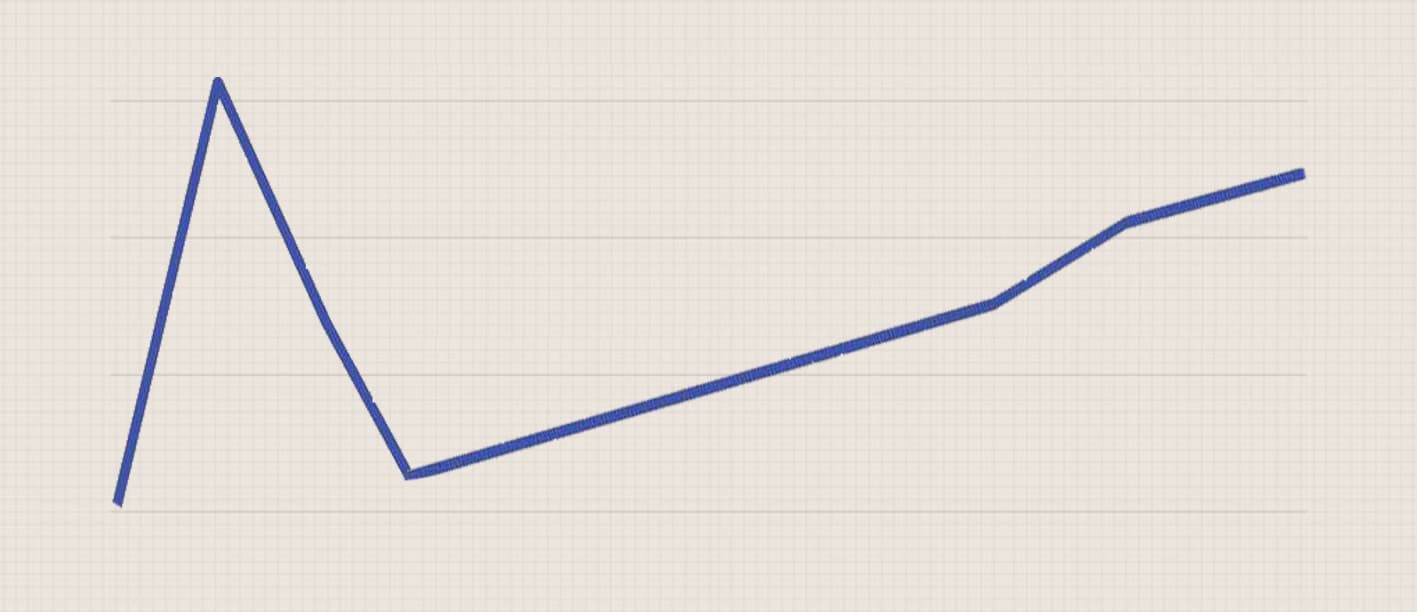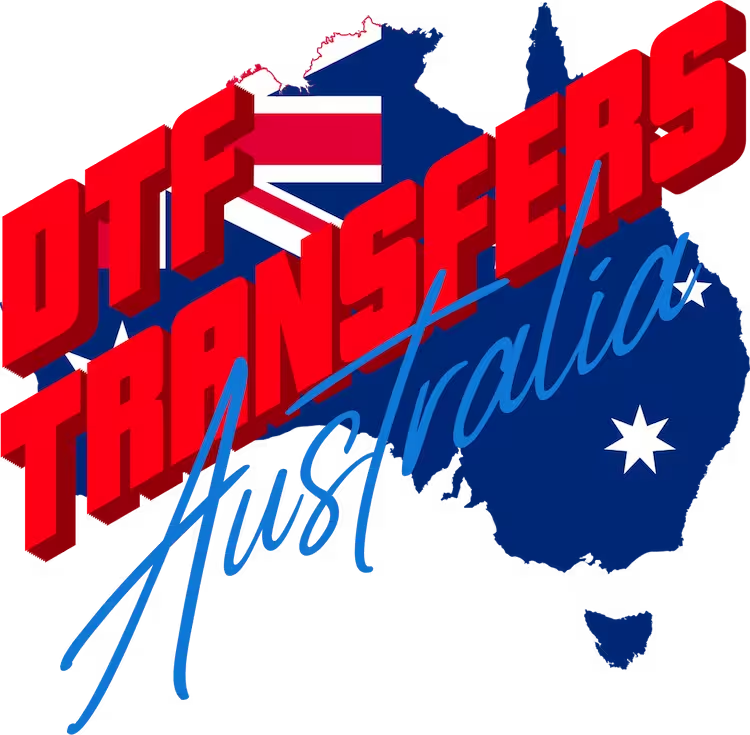Helpful Info, All Posts, Start a T-Shirt Business
Avoid These 10 Mistakes in Your T-Shirt Start-Up
Ever dreamed of crafting a T-shirt empire, one tee at a time? Imagined your designs on the streets, flaunted by strangers who love them as much as you do?
It’s not just you.
In fact, thousands embark on this creative journey every year. It’s tempting – design T-shirts today, start selling tomorrow and voila! A business is born!
The reality however…isn’t quite that simple.
Avoiding common mistakes when starting a T-Shirt Business can be like navigating through an unseen labyrinth. Missteps lurk around every corner – dodgy printing practices to ignoring customer service or underestimating the power of social media marketing.
But no sweat! We’re here to give you some handy tips to dodge these hiccups with ease. Our article on 10 common mistakes to avoid when starting a T Shirt Business can help you avoid these road bumps in your journey to creating a successful T Shirt Business.
Table Of Contents:
- Understanding the T-Shirt Business Landscape
- Crafting Your Unique T-Shirt Designs
- Selecting High-Quality Materials for Your Products
- Avoiding Common Mistakes in Your T-Shirt Business Operations
- Building a Strong Brand Identity
- Managing Cash Flow and Pricing
- Consider Print On Demand
- Setting Realistic Expectations for Your T-Shirt Business
- Understanding the T-Shirt Business Landscape
- FAQs in Relation to 10 Common Mistakes to avoid When Starting a T Shirt Bussiness
- Conclusion
Understanding the T-Shirt Business Landscape
The world of online T-shirt businesses is expanding at a rapid pace. It’s not just about slapping a design on fabric and hoping it sells anymore, it requires careful consideration and planning. Small businesses in particular have to navigate through an array of business ideas before settling on one that fits their vision.
It might be tempting to dive right into your initial investment without fully understanding the market, but doing so could lead you astray from potential customers. The key here is to know your audience – who they are, what they want, and how best you can cater to their needs with your t-shirt designs.
Research shows that the print-on-demand industry is constantly growing; this isn’t surprising given its appeal for e-commerce platforms looking for fresh products or services. By 2025, we’re looking at a whopping $10 billion-dollar t-shirt printing market. A remarkable chance awaits any individual prepared to buckle down and give it a go.
A quick google search will show your all sorts of studies, graphs and expectations, what an exciting and scary time to be entering into the world of eCommerce and T Shirt Design.

Potential Challenges And Opportunities
In this bustling landscape, challenges do exist. Competition is fierce – many others will also see these opportunities and try capitalising on them too.
You’ll need more than just attractive designs – strategy plays a crucial role in success as well. Your marketing plan must be able to identify where your brand stands among competitors while effectively communicating unique selling points.
Navigating The Digital Sphere
A robust online presence has become essential for modern businesses — even more so if you’re running an e-commerce platform like DTF Transfers Australia.
Knowing how to effectively use social media and other advertising platforms can give your business a significant boost. From Facebook advertising targeting specific demographics, to leveraging the power of influencers on Instagram — digital marketing is an avenue you don’t want to overlook.
Your website too needs special attention. Make sure it’s easy for customers to navigate and place orders with minimal friction. This not only enhances user experience but also boosts chances of conversion from visitors into paying customers.
Crafting Your Unique T-Shirt Designs
The world of t-shirt printing is filled with endless creative options. However, making designs that not only look good but also sell well requires a thoughtful approach. One aspect to pay attention to is the image quality.
Adding custom designs to your t-shirts can make them more appealing, it’s true. But remember: images used in designs should have high resolution for professional-looking results – no one wants a blurry design on their new favourite t-shirt.
Balancing Simplicity and Complexity in Design
Simplicity often reigns supreme when it comes to t-shirt design, yet complexity has its place too. Finding the equilibrium between simplicity and complexity is essential.
A complex design isn’t inherently bad; however, if there are too many graphics or colors thrown into the mix without proper planning, you might end up overwhelming your audience instead of enticing them. It’s important then to focus on creating an aesthetically balanced product by controlling visual difference through contrast – using different sizes or colours effectively can help achieve this goal.
Colour choices play another vital role here as they influence how your customers perceive your brand and products. Colour theory, although slightly daunting at first glance, could be very useful here as understanding it will enable you to use color palettes that evoke specific emotions from viewers and hence create a deeper connection with potential buyers.
Selecting High-Quality Materials for Your Products
When you’re starting a T-shirt business, the quality of your materials matters. Selecting superior materials is an essential factor that can give your business the edge over its rivals. To ensure customer satisfaction and to add value to your products, investing in high-quality materials is essential.
A custom t-shirt isn’t just about an appealing design; it’s also about how comfortable and durable it feels when worn. Using high-quality fabric not only ensures customer satisfaction but also adds value to your products, which in turn could lead to more sales.
The Importance of Fabric Quality
Your choice in fabric can make a big difference in the final product. It impacts everything from print quality to comfort level. A good rule thumb? Choose high-quality fabrics that are soft yet sturdy enough to hold up well under printing processes and regular wear-and-tear.
Did you know that the fabric chosen for T-shirt printing should be of high quality? Yes indeed. Customers appreciate shirts they feel good – those made with quality materials will often get your customers to return.

Picking The Right Material For Your Custom Design
- Cotton: Known for its comfortability and breathability making it ideal for everyday wear.
- Polyester: Its durability makes it perfect for sports or outdoor activities because of its quick-drying property.
- A blend: Combining cotton and polyester offers both comfortability and longevity which customers love.
The Long-Term Benefits Of Investing In High-Quality Materials
If you’re serious about building a successful T-Shirt empire then investing upfront on superior fabrics is non-negotiable. A good design on a poorly made shirt won’t last long, leading to disappointed customers and damaging your brand’s reputation.
On the flip side, quality materials can make your designs shine even more brightly – they enhance colours and show off details better. Customers will notice this visual difference.
So, picking top quality materials for your T-shirt venture, it isn’t just about crafting a high-end product though.
Starting a T-shirt business? Make sure you pick high-quality materials. They’re not just comfy and durable – they also enhance your designs, boost customer satisfaction, and ramp up sales. Remember, it’s about more than a great design; the fabric matters too. Choose wisely for long-term success.
Avoiding Common Mistakes in Your T-Shirt Business Operations
Every business owner is bound to face challenges. In the print-on-demand industry, these can range from choosing the wrong t-shirt size for your target audience to neglecting customer service. Let’s look at how you can avoid such pitfalls.
Importance of Customer Service in Your T-Shirt Business
Customer service plays a pivotal role in any business. It’s even more crucial when it comes to selling custom printed t-shirts online where people love quick responses and resolutions.
You’re not just selling items; you are also creating connections with your customers. Make sure that every interaction leaves them satisfied by responding promptly and resolving their issues effectively. For example, if there are printing mistakes on a batch of shirts, offering replacements quickly will show that you value their trust over profit margins.
Preparing Your Business for the Holidays
The holiday season is a peak time for most product businesses like ours as it offers immense potential for sales growth but also poses unique challenges.
To keep up with increased demand without compromising quality or turnaround times, start thinking about scaling up operations well ahead of time – this might mean hiring full-time employees or stocking extra materials beforehand. Here’s some advice on how best to prepare your print-on-demand business during high seasons while maintaining great customer satisfaction levels.
So, whether it’s ensuring top quality customer service or preparing for peak seasons, these considerations can help you avoid common mistakes and keep your t-shirt business running smoothly. Remember – a successful business is not just about selling products; it’s also about offering an experience that makes customers come back for more.
Keep your t-shirt business thriving by prioritising excellent customer service and effective planning for peak seasons. Remember, you’re not just selling tees but building relationships with customers too. Make sure each interaction leaves them happy and ready to come back for more.
Building a Strong Brand Identity
Your brand identity is more than just a logo or colour scheme; it’s the personality of your online store. It influences everything, from how you create custom designs to shaping your product design.
A solid brand identity helps customers connect with your t-shirt business on an emotional level. It lets them feel like they’re part of something bigger when wearing one of your unique pieces.
This emotional connection can also lead to higher customer loyalty and word-of-mouth referrals, which are golden in the e-commerce world. Don’t disregard the potency of a strong brand.

The Ingredients for Successful Branding
To start building this relationship with customers, focus first on defining what makes you different – why should people choose your T Shirts over any other T-Shirt business? Maybe it’s about offering quirky custom designs that aren’t available elsewhere?
Construct a persona for your online store that exudes quality and attention to detail. Customers will appreciate that extra mile – choosing high-quality blanks and ensuring prints have high resolution can make all the difference.
Craft Your Online Store’s Persona
Your online store is where potential customers get their first impression so give careful thought about its look and feel.
For instance, consider using consistent colours across your website and social media channels aligned with what best represents your brands spirit.
Finally, keep in mind that building a strong brand identity doesn’t happen overnight. It requires time and consistency. So stay true to your vision, and the results will follow.
Managing Cash Flow and Pricing
Ensuring a steady influx of money is essential for the success of any T-shirt business; this will help guarantee that you can acquire quality Blanks and consumables and come up with creative designs. Why? Because without a steady stream of income, you might struggle with aspects like buying high-quality materials for you to create your products or investing in creative options for your designs.
The price point also plays an essential role. It can be extremely difficult to strike the right balance – pricing too low may affect profit margins negatively while going too high could turn off potential customers.
Navigating Financial Challenges in Your T-Shirt Business
Cash flow challenges often creep up on many small businesses unannounced. The key is not just recognising them but knowing how to fix these issues effectively.
A common mistake when starting out is neglecting the importance of maintaining good financial health from day one. Remember that managing finances isn’t merely about keeping track of profits; it’s more about making smart decisions around expenditure as well. This article provides valuable insights into avoiding such pitfalls in print-on-demand businesses including t-shirts.
To stay ahead, consider employing simple tools like budget tracking apps or software that allow you see where every penny goes and adjust accordingly if needed. Always have some funds set aside for unexpected expenses – they’re bound to happen.
On another note, let’s talk about setting the right price points for your custom printed t-shirts – something many newbies get wrong. Often people start selling their items at rock-bottom prices thinking this will attract more buyers which can lead to serious underestimation of product value resulting poor cash flow management down line. Instead pay attention to your competitors, understand the value of your final product and set a price that’s competitive yet profitable.
Running a successful T-shirt business requires financial acumen as much as creative talent. But with some smart planning and strategic decision-making, you can overcome these challenges in style.
Consistent cash flow and savvy pricing are crucial in a T-shirt business. Keep your finances healthy from day one, using tools like budget apps to track spending and set aside funds for unexpected costs. Don’t undervalue your products – price competitively but profitably by understanding the market and product value.
Consider Print On Demand
When starting a T-shirt business, one of the common pitfalls is overstocking inventory. This can tie up your capital and lead to potential losses if certain designs don’t sell as expected. A practical solution to this problem is adopting a print-on-demand model using custom Direct To Film (DTF) transfers.
DTF Transfers Australia, for instance, offers high-quality, ready-to-press DTF transfers that are perfect for both small to large print shops and hobbyists looking to start their own T-shirt businesses.
The Benefits of Using Custom DTF Transfers
- Lower Initial Investment: With custom DTF transfers, you only need to purchase 1-10 pieces per design initially. You won’t have to worry about bulk ordering or spending large amounts on untested designs.
- Faster Order Processing: Having pre-printed transfer sheets on hand means you can quickly press them onto blank t-shirts whenever an order comes in. This way, you’ll be able to fulfill orders promptly without needing a huge stockpile of printed t-shirts in various sizes and colours.
- Easier Inventory Management: Managing inventory becomes simpler when dealing with blank t-shirts and transfer sheets rather than fully printed shirts. It’s easier to keep track of what’s selling well so that you can restock accordingly.
Making The Most Out Of Your Resources
In addition, investing in a heat press allows even more flexibility when it comes to fulfilling orders since pressing the design onto the shirt only takes place once an order has been made – saving storage space too! Therefore not just reducing initial capital outlay, but also the space needed for storage.
With this approach, as your T-shirt business grows and you start to see which designs are more popular, you can adjust your inventory accordingly. If a particular design is selling well, order more transfers of that design. If another isn’t moving as quickly, hold off on reordering until demand picks up again.
In essence, print-on-demand using custom DTF transfers offers an efficient way to manage resources when starting a T-shirt business – making it easier to navigate common mistakes and set yourself up for success.
Setting Realistic Expectations for Your T-Shirt Business
Your journey to start selling t-shirts will be a learning experience filled with both triumphs and hurdles. Setting realistic expectations is essential, as it’s easy to get swept away in the dream of your own t-shirt empire without understanding the hard work involved.
The common mistakes that new business owners make often stem from having inflated or unrealistic expectations about their enterprise. It’s crucial not only to have a solid business plan but also to acknowledge that success won’t happen overnight.
You need patience and persistence. Hard work plays an instrumental role, especially when you’re at the beginning stages of setting up your online shop. And let’s face it; mistakes are going to happen because they’re part of any learning process.
Below is a graph showing how most new T Shirt Businesses sales go, at the strat you will have all the passion and put a lot of energy in, your Friends and Family will all support you and buy a T Shirt they will tell their friends and you will get a spike of sales. Great what a start, but then in settles the reality, you will lose all the sales that you had at the start and the slow growing and working hard starts. Don’t give up just keep working away and refining and trying new things, you can get there.
At this stage is when a lot of people give up as they had a great start and then they start to only sell a few T Shirt, but this is where those that fail and those that secede differ, reliasie that it is going to be challenging and take hard work, be realistic on your expectations and you can be one of the winners.

Learning from Mistakes
No matter how much planning you do before launching your custom printing venture, there’ll always be unexpected obstacles on your path. These can include choosing wrong print sizes, messing up color palettes while making designs or even facing challenges while marketing on social media platforms like Facebook advertising.
Mistakes starting out aren’t just inevitable; they’re invaluable lessons in disguise. So instead of feeling disheartened by these bumps along the way, see them as opportunities for growth and refinement in your approach towards achieving design goals or enhancing marketing strategies.
Achieving Balance between Dreaming Big & Being Practical
While dreaming big fuels passion and creativity – which people love – being practical keeps us grounded so we don’t waste time chasing unattainable targets or investing heavily into full-time employees right off the bat. Starting small is not a sign of lack of ambition, but rather it’s about understanding your capacity and taking steps accordingly.
This is especially important when you’re dealing with tangible product businesses where quality control over the final product can become extremely difficult if operations are scaled up too quickly. Starting small lets you pay attention to detail and ensure that every t-shirt that leaves your shop meets high standards.
When starting a t-shirt business, be prepared for the journey – there’ll be triumphs and hurdles. Stay grounded by setting realistic expectations, understanding that success won’t happen overnight. Embrace mistakes as valuable lessons and balance dreaming big with practicality. Start small to ensure quality control while you grow.
Understanding the T-Shirt Business Landscape
With an online t-shirt business, it’s essential to understand your potential market size. Why is this so important? Because knowing who you’re selling to can shape every decision you make. From your design goal, right through to your marketing strategy.
E-commerce has seen a dramatic rise in popularity of late. The t-shirt printing industry alone is projected to reach up to 10 billion dollars by 2025 according to Small Biz Trends. This offers a vast opportunity for new businesses and established ones looking at expansion.
Crafting Your Unique T-Shirt Designs
T-shirts are like blank canvases waiting for creativity. But it’s not just about slapping on any old image – quality matters too. To stand out, employ quality visuals and a colour scheme that resonates with your desired viewers.
Avoid common mistakes such as overwhelming designs or multiple colours which can make viewing extremely difficult; balance is key here. Adding custom elements will further boost appeal but always remember contrast plays a vital role in aesthetics.
Selecting High-Quality Materials for Your Products
Your final product reflects the quality of materials used. People love soft fabric against their skin; hence choosing high-quality blanks enhances customer satisfaction immensely. Good design paired with quality fabric ensures repeat customers – people appreciate value.
FAQs in Relation to 10 Common Mistakes to avoid When Starting a T Shirt Bussiness
Is t-shirt business still profitable?
Yes, a T-shirt business can turn a tidy profit if you nail the right niche and understand your target audience’s needs.
What is a reasonable number of T-shirts to own?
The quantity varies for everyone. However, owning around 20-30 versatile tees allows room for rotation and different outfit combinations.
Should I copyright my Tshirt designs?
This can be expensive, but if you can afford it, Absolutely. Copyrighting your unique designs shields them from copycats and protects your creative work legally.
How can I improve my Tshirt business?
To boost your tee biz, focus on quality materials, distinctive designs, customer service excellence, solid branding and savvy pricing strategies. Work out where your designs sit and who your customers are and target your marketing.
Conclusion
Starting a T-shirt business is an exciting venture. But remember, dodging those common mistakes will give you a head start.
Your designs matter. Striking the balance between simplicity and complexity can make all the difference in appeal.
The materials used shouldn’t be compromised. Quality fabrics lead to satisfied customers, helping your reputation grow.
Customer service plays a crucial role too; happy clients are repeat clients!
Don’t underestimate brand identity – it’s what sets you apart from others on that crowded online shelf.
Pricing and cash flow? Get them right for smooth sailing ahead. Lastly, set realistic expectations; Rome wasn’t built in a day! Your T-shirt empire won’t be either!
In conclusion, avoiding these 10 common mistakes when starting your T-Shirt Business can turn potential pitfalls into stepping stones towards success.



